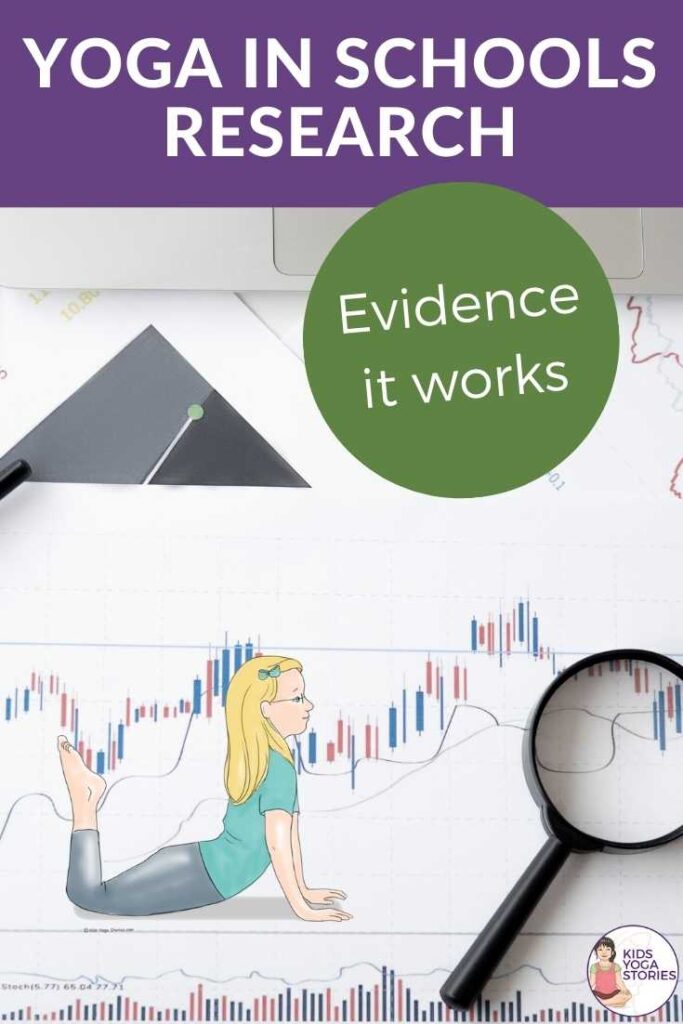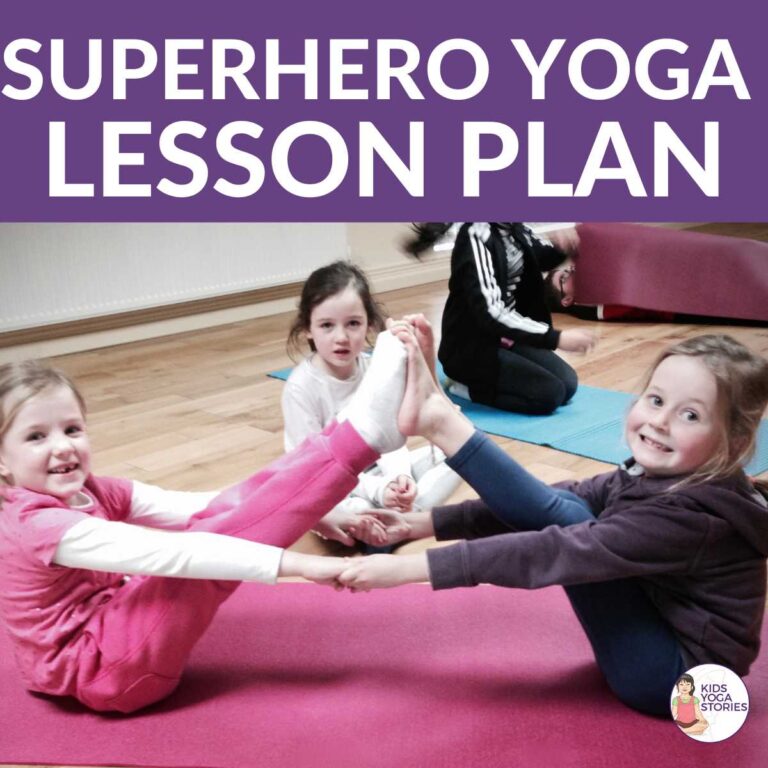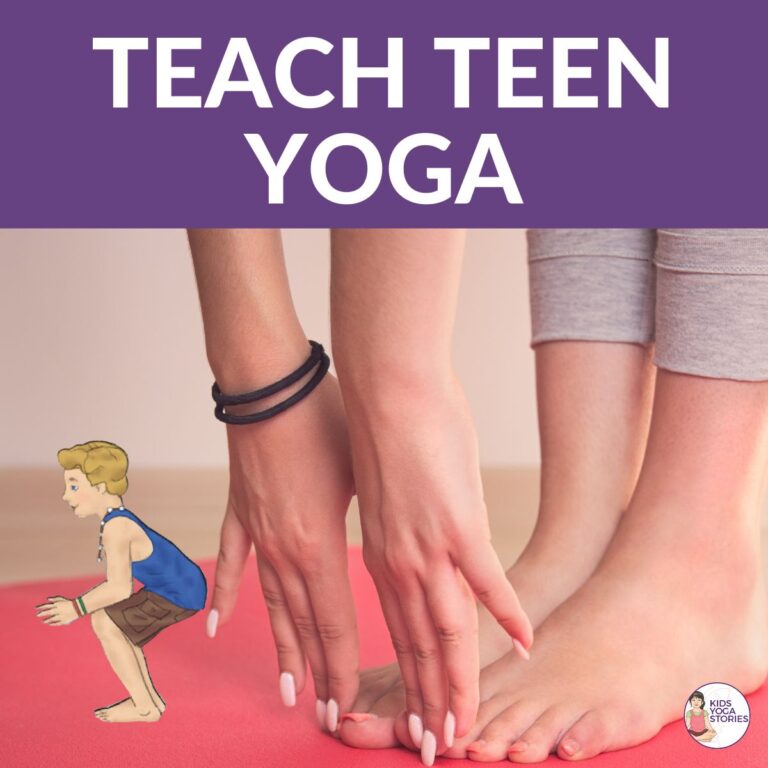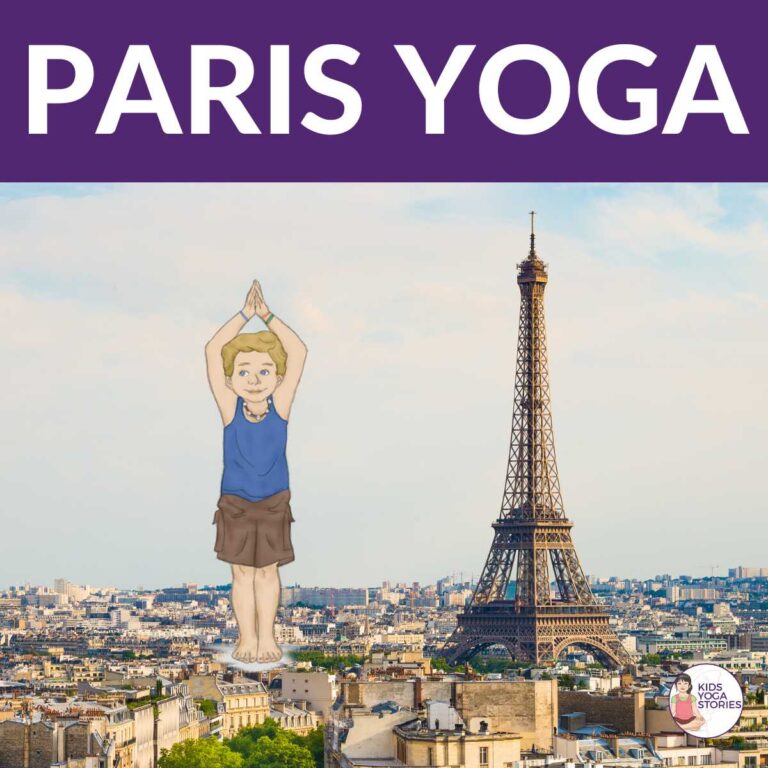Yoga in Schools Research: Self-Regulation and Focus Using Yoga and Mindfulness
Are you hoping to add yoga and mindfulness to your curriculum by looking for evidence that it works? Or has your administration asked you for yoga in schools research to back up your school yoga program?
Below you will find seven scientifically proven ways that yoga and mindfulness benefits students in the classroom. These studies will show you the measurable changes in student behavior and compliance after an eight-week mindfulness program or the impact on the classroom after a group of teachers took mindfulness training.
This article may contain affiliate links.
GET YOUR 3 POSTERS HERE
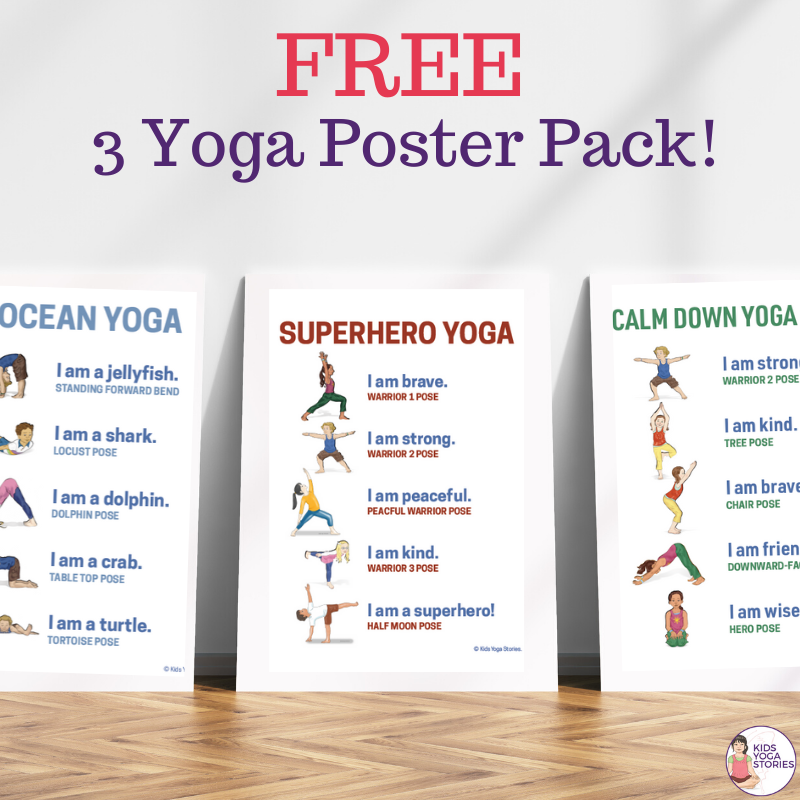
These days, schools and teachers are responsible for more than just teaching students. School is where children learn to be kind, compassionate, strong, and resilient. It is where they are shaped into good human beings. Students are fed when they are hungry and consoled when they are upset. Our school educators do a lot every single day—far more than what shows up in the job description.
How do our educators manage to fit all of this into their days? And can they continue to do all of this while maintaining their sanity? Educators struggle with the daily balancing act in their classrooms. It hardly ever feels like there’s enough time.
I get it—I was a teacher too. The classrooms are filled with busy-bodied individuals, students with a diagnosis or two, and students who struggle getting their emotions and behaviors under control. Day in and day out, there are so many different needs and tons of interruptions. On top of it all, teachers are expected to squeeze in the curriculum in such a short period of time. A school year goes by pretty quickly.
We are worried about fitting everything into our already-overloaded schedules—teaching students how to read and write, how to solve problems, and teaching them to be kind, compassionate, and confident people. Staff working in classrooms—and even in the school office—have become experts at the juggling act, balancing the many demands of students who regularly act out, struggle with schoolwork, and cannot self-regulate yet.
It doesn’t always have to be this way. Thanks to a great deal of research, we are learning more about children and their human nature. They are resilient creatures who can thrive when taught new skills—and they can more easily hold on to those skills than adults can. Kids are sponges.
The truth is learning how to self-regulate, foster self-esteem, problem solve, gain empathy, and build healthy life habits is no different than learning how to play basketball or the piano, or even how to read and write. They are skills that can be taught.
We can teach all these skills and more by incorporating daily yoga and mindfulness practices within our school community.
The Benefits of Yoga and Mindfulness in School
Research has shown that yoga and mindfulness can have many positive effects:
- Reduced Stress and Anxiety
- A mindfulness intervention integrated into middle-school curriculum for eight weeks provides evidence that this training reduces stress and promotes functional brain changes. (https://psycnet.apa.org/doiLanding?doi=10.1037%2Fbne0000337)
- A residential treatment program of adolescents ages twelve through eighteen participated in MBSR training. The results show MBSR is effective for improved coping with internalizing problems and adaptive emotional skills. (https://acamh.onlinelibrary.wiley.com/doi/abs/10.1111/camh.12302)
- A Mindfulness-based stress-reduction course taught to teachers in Denmark in 2020 shows that teachers can significantly reduce their stress. (https://academic.oup.com/eurpub/article/32/2/246/6526190?login=false)
- A summary of research on Yoga, Mindfulness and SEL specific to students and the classroom shows improved mental well-being, reduced anxiety and depression, less negative behavior, more attention, and improved physical health. (http://www.yoga4classrooms.com/supporting-research)
- Evidence based on neuroscience and brain imaging displays the impact that Mindfulness has on students’ mental, emotional, social, and physical health. (https://mindfulnessinschools.org/wp-content/uploads/2013/02/MiSP-Research-Summary-2012.pdf)
- A 2012 study comparing research done around the world of mindfulness interventions in schools (first through twelfth grade) shows improved resilience to stress and cognitive ability among students. (https://www.frontiersin.org/articles/10.3389/fpsyg.2014.00603/full)
- Mindfulness-based stress reduction course taught to primary school teachers shows to improve anxiety, depression, and stress among teachers. (https://link.springer.com/article/10.1007/s10826-009-9344-0)
- Students and teachers at Catholic Gymnasium for girls in Freiburg, Germany, were taught an eight-week mindfulness-based stress reduction program that showed improvements in stress, self-efficacy, and interpersonal problems among both groups. (https://www.frontiersin.org/articles/10.3389/fpsyg.2016.00590/full)
- Forty-nine students attending school in an urban inner-city school district participated in a yoga-based social-emotional wellness promotion program, which showed significant reductions in stress, anxiety, and depression.
(https://www.tandfonline.com/doi/abs/10.1080/15377903.2013.863259) - School teachers in Denmark participated in a trial during 2020 and were taught to use MBSR to manage the everyday stress of their jobs. Results show that teachers can reduce their stress be delivering MBSR as a part of a teacher training program. (https://academic.oup.com/eurpub/article/32/2/246/6526190?login=false)
- Mindfulness-based interventions in students from ages twelve to eighteen shows significant reduction of stress (but not with derpression/anxiery). (https://acamh.onlinelibrary.wiley.com/doi/full/10.1111/camh.12572)
- Fosters Compassion and Empathy
- Studies that contained children and adolescents between ages five and eighteen measured an increase in empathy or compassion in some form and during a mindfulness-based intervention. (https://link.springer.com/article/10.1007/s10826-019-01413-9)
- This summary of research shows the effectiveness of mindfulness-based intervention in supporting self-regulation, particularly cognitive regulation, but emotional and behavior regulation as well. (https://link.springer.com/article/10.1007/s10643-022-01333-2)
- Studies of mindfulness education in primary and secondary schools show significant reductions in bullying after promotion of nurturing positive social skills including compassion, patience, empathy, and generosity. (https://files.eric.ed.gov/fulltext/EJ1072925.pdf)
- Four classes of fourth- and fifth-grade students assigned to an SEL and mindfulness program reported greater empathy, perspective-taking, emotional control, optimism, school self-concept, and mindfulness. (https://psycnet.apa.org/record/2014-56463-002)
- A study of individuals with a childhood maltreatment history taught a mindfulness-based intervention showed significant improvements in mindfulness, nonattachment, and empathy. (https://link.springer.com/article/10.1007%2Fs12671-020-01322-9)
- Builds Resilience and Adaptability
- This study of 220 middle schoolers during 2020-2021 showed the significant positive effect mindfulness has on resilience and mental health. (http://childmentalhealth.ir/browse.php?a_id=1120&sid=1&slc_lang=en&ftxt=0)
- This study examined the effects of mindfulness on resilience of adolescents coming from a low socio-economic background shows significant and positive relations between resilience and mindfulness. (https://www.sciencedirect.com/science/article/abs/pii/S0191886918306433)
- Fourth- and fifth-grade girls assigned a mindfulness intervention showed increased self-esteem, self-regulation, and the ability to cope with stress. (https://www.sciencedirect.com/science/article/abs/pii/S0891524511000551)
- University students completed questionnaires that measured individual differences in mindfulness, resilience, and psychological well-being; findings revealed significant connections between mindfulness practices and resilience. (https://www.ijlass.org/data/frontImages/gallery/Vol._2_No._5/3.pdf)
- Forty sessions of classical yoga intervention taught to students ages sixteen through eighteen has helped enhance resilience in students. (https://search.proquest.com/openview/4a684c5ccc39c7c575a0f8bcebb4a6ac/1?pq-origsite=gscholar&cbl=2032133)
- This article addresses some of the stressors kids experience daily and suggests that yoga practices for children improve their mental health, well-being, and self-regulation processes. (https://www.frontiersin.org/articles/10.3389/fpsyt.2014.00035/full?report=reader)
- Improves Focus, Attention, and Concentration
- This study of children ages seven through twelve diagnosed with ADHD suggests that mindfulness in the form of structured group therapy might be clinically relevant in improving focus in children with ADHD. (https://journals.lww.com/jrnldbp/Abstract/2019/08000/Deficient_Emotional_Self_Regulation_in_Children.3.aspx)
- The study of the mindfulness program CalmSpace provides evidence that brief and targeted mindfulness activities practiced throughout the school day can result in benefits for the students. (https://www.frontiersin.org/articles/10.3389/fpsyg.2019.02052/full)
- Edmunds Elementary, an inner-city school in Des Moines, Iowa, uses a program we developed called Yoga 4 Classrooms and have witnessed an improvement in academics and decrease in behavioral issues. (https://greatergood.berkeley.edu/article/item/seven_ways_that_yoga_is_good_for_schools)
- Thematic analysis was applied to elementary school students’ mindfulness journals. These findings suggest that mindfulness enhances and sustains student wellbeing and learning. (https://www.scirp.org/html/8-6901472_57556.htm)
- A six-week program of Sahaja yoga meditation techniques were taught to children with ADHD and their parents, and the results showed improvements in child’s ADHD behavior, self-esteem and relationship quality. (https://journals.sagepub.com/doi/abs/10.1177/1359104504046155)
- More than forty children participants with cerebral palsy who were taught mindfulness and yoga showed significant improvements in attention. (https://onlinelibrary.wiley.com/doi/full/10.1111/dmcn.13923)
- Boosts Self-Esteem, Confidence, and Self-Awareness
- This study investigated the effects of an eight-week mindfulness training program on suicide ideation of left-behind children in China. It showed a significant improvement in mindfulness level and decreases in social anxiety and suicide ideation after the eight-week training. (https://onlinelibrary.wiley.com/doi/abs/10.1111/cch.12650)
- The results of this study showed that mindfulness-based cognitive therapy was effective in reducing social anxiety and was effective in increasing the self-esteem of students with learning disabilities. (https://www.ncbi.nlm.nih.gov/pmc/articles/PMC5292141/)
- This paper explains guided meditation as a powerful technique for facilitating healing and growth by helping adolescents connect to their inner voice and enhancing self-awareness and life purpose. (https://downloads.hindawi.com/journals/tswj/2005/263274.pdf)
- Cultivates Emotional Regulation and Improves Executive Functioning
- Children ages nine and ten who received six weeks of mindfulness training showed significant improvements in mindfulness, positive outlook, life satisfaction, and cognitive reappraisal. It suggests higher levels of mindfulness may be related to effective emotional regulatory and cognitive reappraisal strategies. (https://bmcpsychology.biomedcentral.com/articles/10.1186/s40359-020-00428-y/)
- This study with children with ADHD, ages seven through eleven, shows encouraging results that suggest that mindfulness meditation practices promote changes in neuropsychological measures, especially those in which executive functions are involved, and behavioral symptoms in children with ADHD. (https://www.mdpi.com/1660-4601/17/18/6916)
- A study of students ages six and seven practicing mindfulness awareness practices showed improvement in executive functioning and behavior regulation. (https://www.tandfonline.com/doi/full/10.1080/15377900903379125?src=recsys)
- The BREATHE program (mindfulness pilot study) for 120 adolescents with an average age of 17 showed improvements in emotion regulation and increased feelings of calmness, relaxation, and self-acceptance. (https://www.tandfonline.com/doi/abs/10.1080/1754730X.2009.9715696?src=recsys)
- Training of Relaxation with Elements of Yoga for Children technique was introduced to fifth-grade students to increase emotional balance in the long term and reduce fears. (https://www.tandfonline.com/doi/abs/10.1080/0300443042000230537)
- High school students participated in a randomized study of a sixteen-week yoga intervention; results showed a significant positive correlation between body awareness and emotion regulation. (https://www.hindawi.com/journals/ecam/2015/794928/)
- Preschool teachers who participated in an eight-week mindfulness course on behaviors of their students applied their knowledge, and their students’ challenging behaviors decreased while compliance increased. (https://www.tandfonline.com/doi/abs/10.1080/15427609.2013.818484)
- Improves Physical Health and Mind-Body Connection
- This study shows mindfulness and yoga interventions may be effective in reducing stress and anxiety and improving quality of life and lung function for children and adolescents with asthma. (https://www.sciencedirect.com/science/article/abs/pii/S0882596320300634)
- Mindfulness intervention studies in children, such as MBSR, mindful eating, and yoga, show more promise treating the psychologic and physiologic comorbidities and contribute to overall health and wellbeing of children with obesity. (https://www.tandfonline.com/doi/full/10.2147/DMSO.S220671)
- Research on school-based yoga and mindfulness suggests these programs have a number of positive effects on student health, behavior, and performance. (http://www.yoga4classrooms.com/supporting-research)
- This article presents research literature suggesting that yoga improves children’s physical and mental well-being. (https://www.frontiersin.org/articles/10.3389/fpsyt.2014.00035/full?report=reader)
- Kids Yoga Research suggests that yoga practice has contributed to the improved physical well-being of students in this study and impacted knowledge of the human body, eating awareness, and body posture. (https://move-with-me.com/kids-yoga-research-study-benefits-of-incorporating-yoga-into-classroom-teaching/)
- Approximately one hundred schoolchildren ages eight to thirteen were randomized into groups to compare the effects of yoga and physical exercise. Both groups showed physical health improvement; the yoga group showed better balance and improved coordination. (https://capmh.biomedcentral.com/articles/10.1186/1753-2000-7-37)
- A summary of mindfulness research demonstrates the many impacts mindfulness has on our bodies, including the brain and immune system. (https://missoulamindfulcounseling.com/images/research_benefits/Mindfulness_research.pdf)
There are so many ways to implement yoga and mindfulness into your classroom’s daily schedule. The possibilities are endless!
In her book, Twelve Steps to a Compassionate Life, author Karen Armstrong, states: “Practice is more important than theory.”
It doesn’t matter how you do it, just that you do it. And we are here to help!
MAY WE SUGGEST…
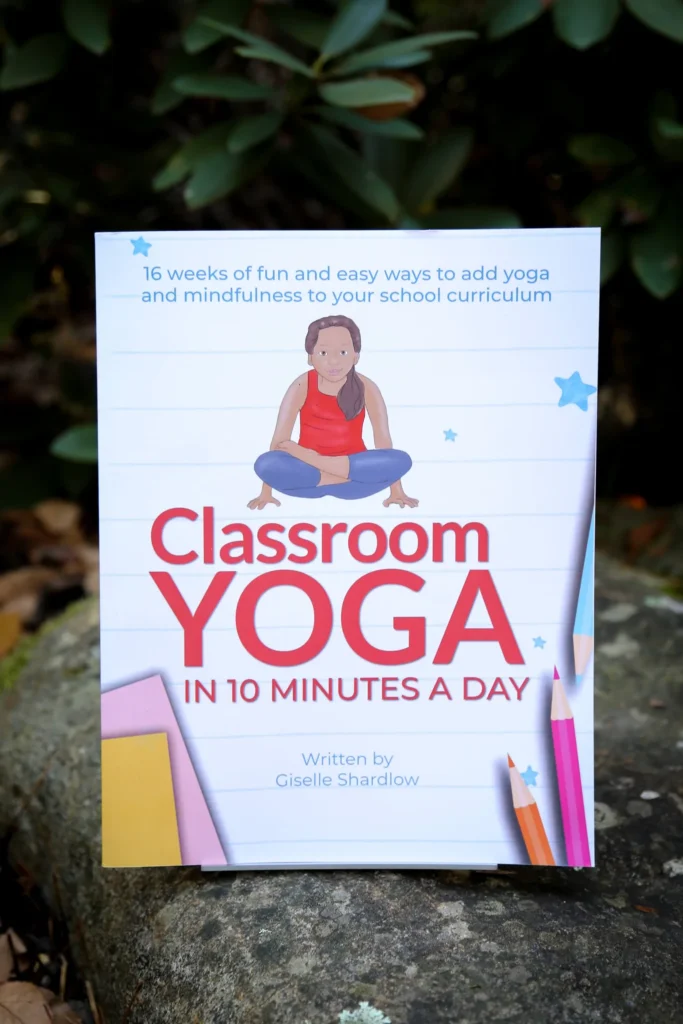
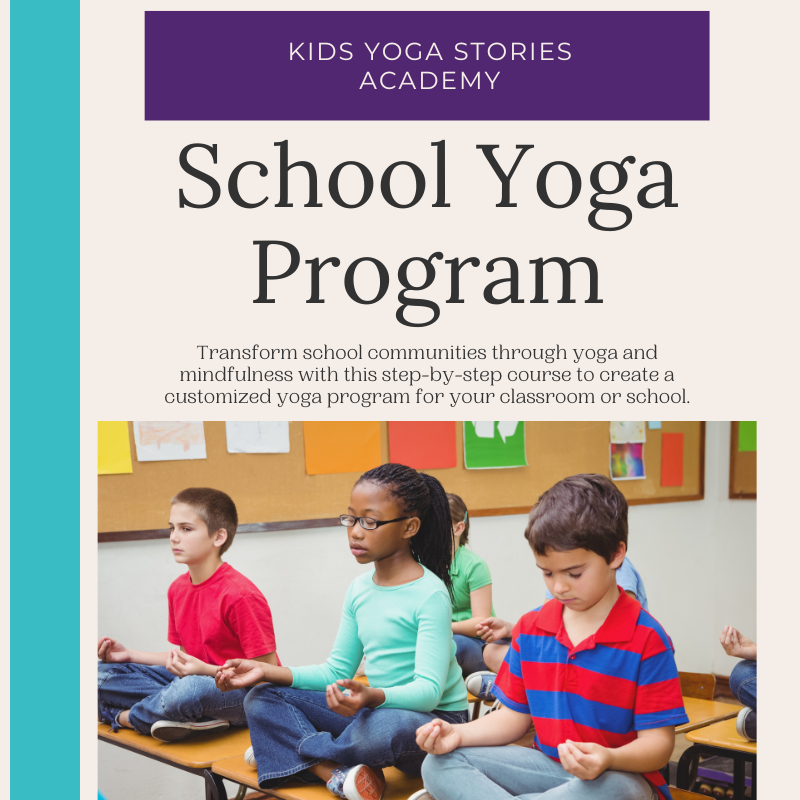
YOU MIGHT ALSO LIKE
SAVE IT FOR LATER
